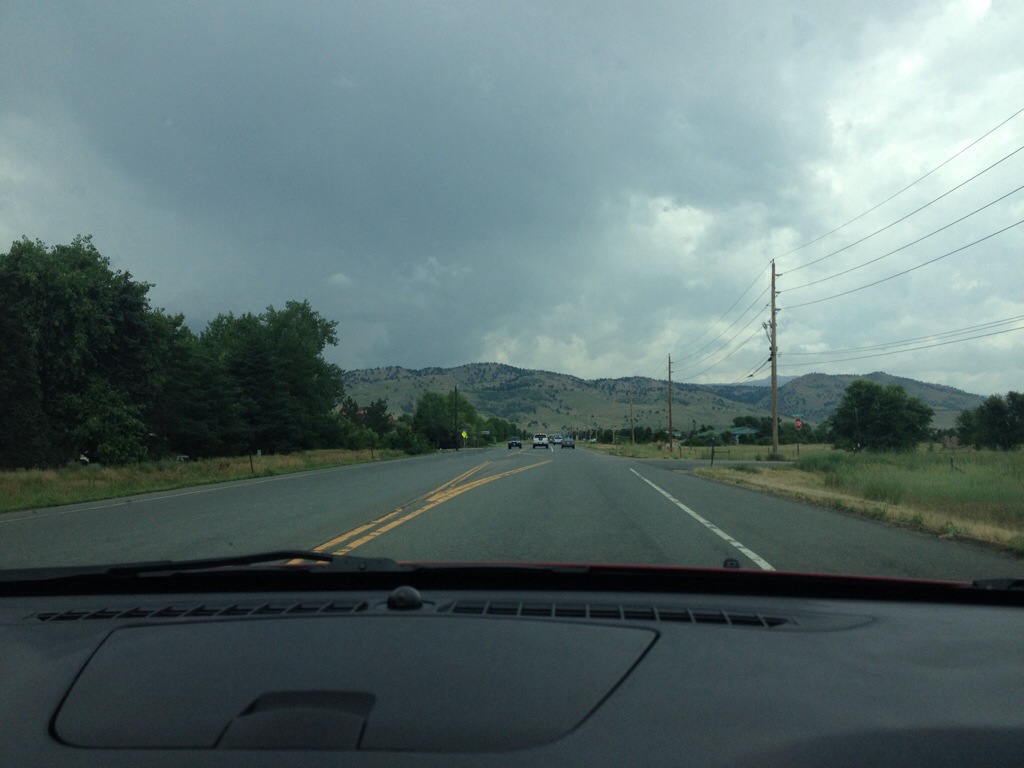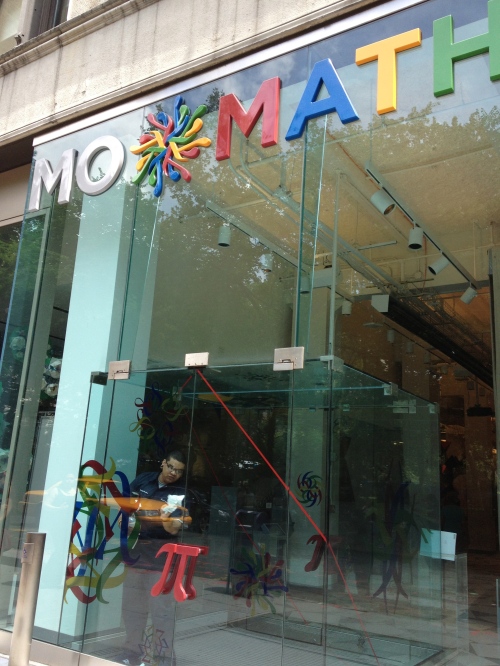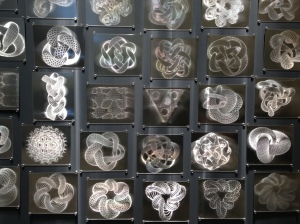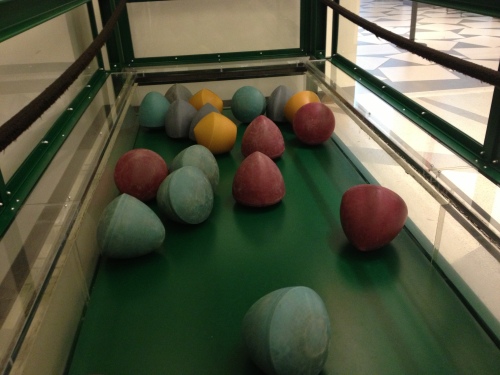I ended last semester feeling pretty discouraged about my implementation of standards based grading. I still felt pretty good about what it was doing for students. For the students that were actually taking advantage of the system and initiating reassessments, it seemed to be helping. Some examples:
- Students were getting frequent assessment over the different standards of the course through quizzes, and got feedback on their learning the same day since the quizzes were short.
- Some students understood that they could request reassessment on their own to show progress on standards that previously were not marked as proficient.
- On a day that I gave one of these standards quizzes, I was guaranteed to have a conversation on content, albeit sometimes a short one, with every single student. I can’t guarantee that I get to every student, every period, though I’d like to think that I do.
- Students seemed to be less frustrated or scared by unit exams, and I received (anecdotally) fewer blank problems since students had an incentive to try anything.
By the end of the semester, I had 248 student-initiated reassessments. I don’t know how that compares to others, but that number seemed to be an indication that something was going well. Then I looked at the numbers. Of those reassessments, eighty-eight of them were in the last week of the semester. Roughly 1/3 of the total were taken by the top five most frequent assessors.
I wasn’t getting to many of the students. Despite my efforts to constantly ask students to do so, talk about opportunities to reassess in class, and target students that needed extra help with suggestions to come see me after school, some students didn’t know that they could reassess. Some students didn’t make the time. In fact, most didn’t. I was also tolerating a fairly heavy end of semester reassessment rush that seemed higher than what I’d like to see happen.
The other concept that also bugged me was that in this system, I wasn’t placing value on those behaviors that would lead to higher standards scores. No, I wasn’t about to go back to a system of checking homework, and giving extra credit – the grades reported through standards were a pretty good measure of what students knew. On an end of semester survey, a majority of students confirmed this fact. Students also understood that reassessment without preparation wouldn’t result in increased scores. I had students that said, however, that doing homework, getting help after school, teaching concepts to other students – those things that result in improved understanding – weren’t accounted for in the grade. If I valued those as part of the process, why was I not assigning any value to them in the grade?
I spent a lot of time thinking about this over the winter break. In my system, there was a fundamental gap between the behaviors I wanted students to develop, and the way I was measuring the learning happening in my classroom. Students understand the system this way:

There is a visible wall between what students know I value and what they see measured in their grade. This is the philosophical basis of standards based grading – the grade is a measure of learning content, not necessarily of completion of activities. It is fundamentally different from other grading systems. We don’t see it this way as teachers, however.
We see it like this:

I have the conversation with students all the time about the difference between these two conceptions. They do understand. It just doesn’t fit with the rest of what they have been told in school, where learning sometimes takes second fiddle to being a student.
This is a communication design problem. After a lot of thinking and designing, I came up with a new computer based system using the Meteor JS framework that I’ve been using since January.

Some parts of it have helped bridge this gap (and other problems) in some ways that have been quite productive – I’ll go through them piece by piece.
Problem 1 – Google Forms are not reliable in China.
I previously used a Google form to collect reassessment sign-up data. Students would frequently (and with good reason) say that they couldn’t log on to sign up because of this issue. While there are still internet issues with the new site, this is less of a problem. They can log in with their own email address, their own secure password, and I can control the input/output of information much more reliably since it’s a database, not a spreadsheet.
Problem 2 – I don’t want students signing up for reassessments the same day.
I really want students planning ahead. The Google form didn’t have the option of limiting which days they could sign up for based on the time of sign up, at least I didn’t see how to do this easily. It’s true that I could simply see which students signed up from the Google form results spreadsheet, but that involved scrolling, searching, and mentally filtering results. That was more work than I wanted to be doing.
With some Javascript, I make it impossible to do this. Students log in, click on ‘Reassessment Sign-up’ and see this form:

Problem 3 – Students forget which standard they signed up to reassess on.
I received an email every time students signed up for a reassessment through the Google form. I never figured out a slick way to do this through forms – I’m sure it’s possible. With this system, students can click on ‘My Reassessments’ and see what they’ve signed up to do:

If they miss the bus and have to reschedule for later the same day, they can log in and edit the reassessment themselves. Because of Meteor’s realtime system, those changes instantly show on my browser when they happen.
Problem 4 – Students sign up to reassess without any preparation.
This was a big one I wanted to solve. On my previous form, there was just a check box that said “I promise to prepare for this reassessment” along with a box where they describe what they did to prepare. I wasn’t directly able to check this, and usually didn’t have time to do so beyond noting that it was more substantial than ‘I studied’.
When students log in and sign up for a reassessment now, they see a little badge called ‘Reassessment Credits’. Each reassessment costs them one credit. What happens when they try to sign up for a reassessment without any credits left?

They can’t do so. No way around it, at least without learning some Javascript to hack my system.
This is where I find I am doing the work to educate students in what I am looking for. I value the work that they do in preparing for reassessments. I show that value through giving students credits, a token for whatever it is they choose to do to improve their understanding. These credits then directly convert into opportunities to show what they have learned through reassessment. I have the flexibility to give credits for different things that students do – tutoring other students, sitting in the classroom and doing homework with me, or simply showing me the homework they did after the previous class. This value is separate from the grade. Students have also found that through doing the work to earn a credit, I have directly increased their standards grade because I’ve seen evidence of higher understanding there.
Problem 5 – Students don’t know that their peers are reassessing.
I’m not ashamed to say that I also wanted to call upon the fact that students (and all of us) are influenced to some extent by our social community. I added one more part to the page that some students have reported has pushed them to sign up and complete reassessments.

When I first added this feature, a student said she was disappointed when she saw her proportion of the total decreasing, so she felt compelled to figure out what she might reassess over based on her progress.
Problem 6 – Staying organized with reassessments from four different classes is difficult
This system is computerized, so it’s easy to sort which reassessments I have on a given day.

Rather than skimming a spreadsheet and figuring out which quizzes to prepare, I have an easy list that allows me to prioritize and plan which quizzes I need to have available for which part of the day.
I’ve taken a lot of the obstacles out of the way that have made it stressful for me to stay organized in reassessments, and for students to opt not to do so. I am not trying to make a point about quantity vs. quality here, but I’m really pleased with how the system has worked for students.
So far this semester, I’ve had 221 reassessments through the system at this point in the semester, and we’re only in the first quarter. Thirty seven out of 55 students have assessed multiple times. Eleven students thus far have not reassessed at all, and I’ve seen that information easily through some database queries, which has prompted some conversations with those students about why they haven’t. It’s far easier than it used to be to get this information out.
Students also have great ideas for making it better. They know themselves, and know what would help them stay on top of their needs. I enjoy the challenge of learning to build this for them, and they seem to appreciate the effort.
I am not sharing the URL quite yet since there is student user information in there, and haven’t built a nice sandbox login yet to see the features. That will come when I have the time, whenever that is.
























